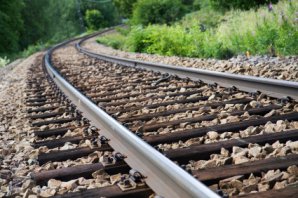How to make train rails as straight as they should be
Scientists combine three different methods to better understand and predict the behaviour of materials in rails.
Inês Crespo, Information Manager, 19/01/2015

While riding a train one does not usually think of all the science employed to make it work. A recent publication by a group of scientists from Austria and Germany sheds light on the processes behind rail production.
The final step in the production of a railway track is to straighten the rollers. This complex step is fundamental to keep residual stresses to a minimum so that rails can be robust and long-lasting. Now for the first time the group has characterised stress in “as-produced” rails, using an uncut section. To characterise the residual stresses they have conducted neutron diffraction experiments at the FRM II Neutron Source, to which they had access thanks to NMI3 support, and applied also the contour method.
They have then used the simulation model FEM to correlate the results. Even though the methods employed greatly differ from each other in terms of procedures and costs, they have obtained the same results with all three approaches. This shows that the FEM model is valid to characterise residual stresses in straightened railway rails.
We can now better understand and predict the straightening procedure. The group suggests that the position of the individual rollers and the forces applied by them influences the stresses on the rail. This work paves the way to the construction of more robust and enduring railways.
Original publication
R. Kaiser, M. Stefenelli, T. Hatzenbichler, T. Antretter, J. Keckes and B. Buchmayr (2014) Experimental characterization and modelling of triaxial residual stresses in straightened railway rails, The Journal of Strain Analysis for Engineering Design, 1-9 DOI: 10.1177/0309324714560040
R. Kaiser, T. Hatzenbichler, T. Antretter, J. Keckes and B. Buchmayr from the Montanuniversität Leoben and M. Stefenelli from the Materials Center Leoben Forschung GmbH in Austria have received NMI3 support to conduct experiments at the FRM II Neutron Source in Germany.
NMI3 thanks Jozef Keckes for reviewing this article.


